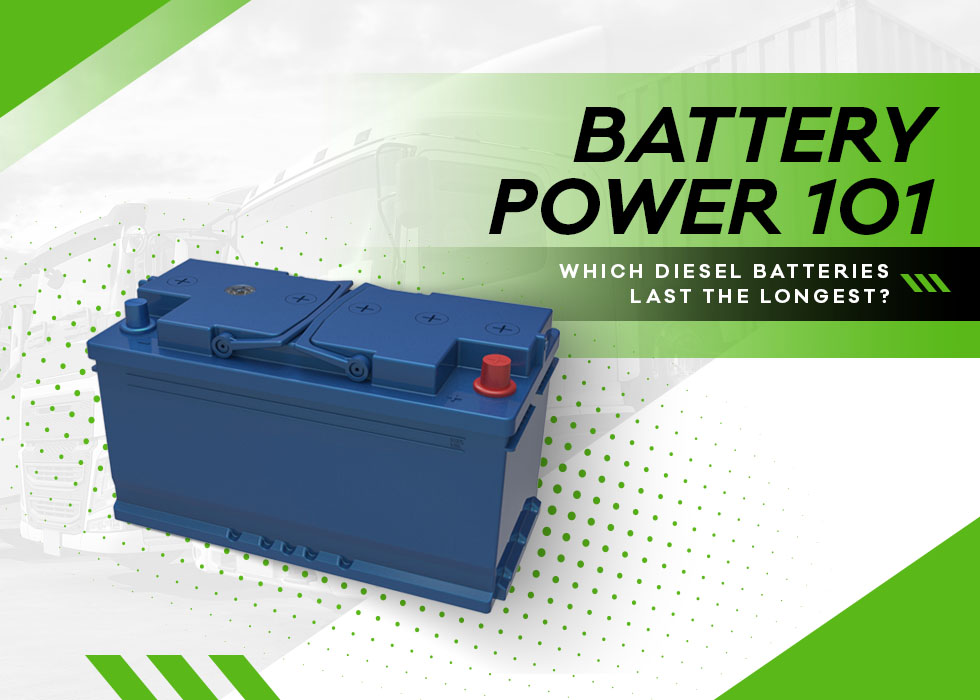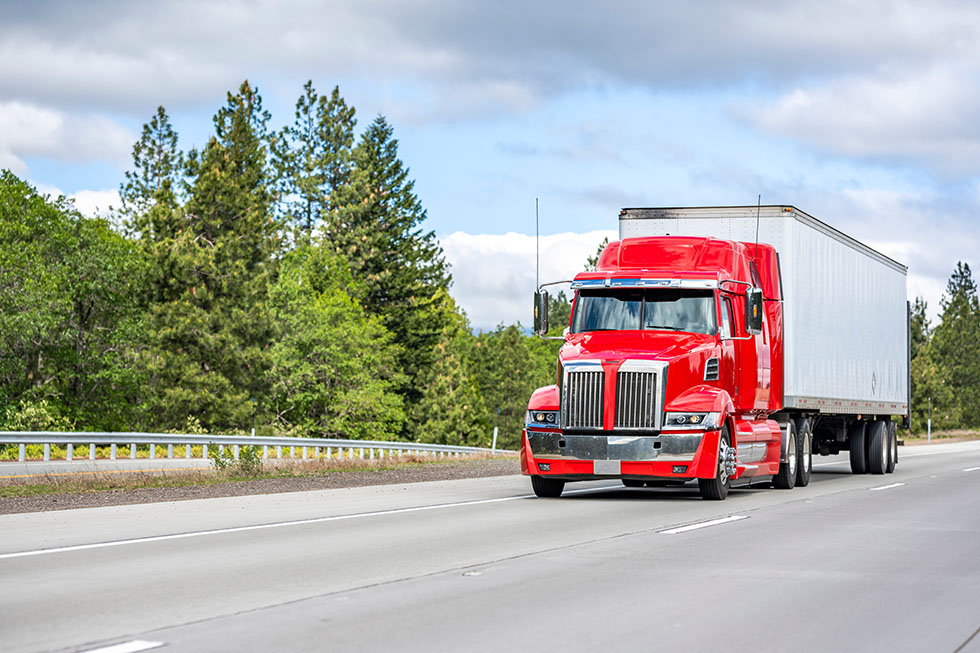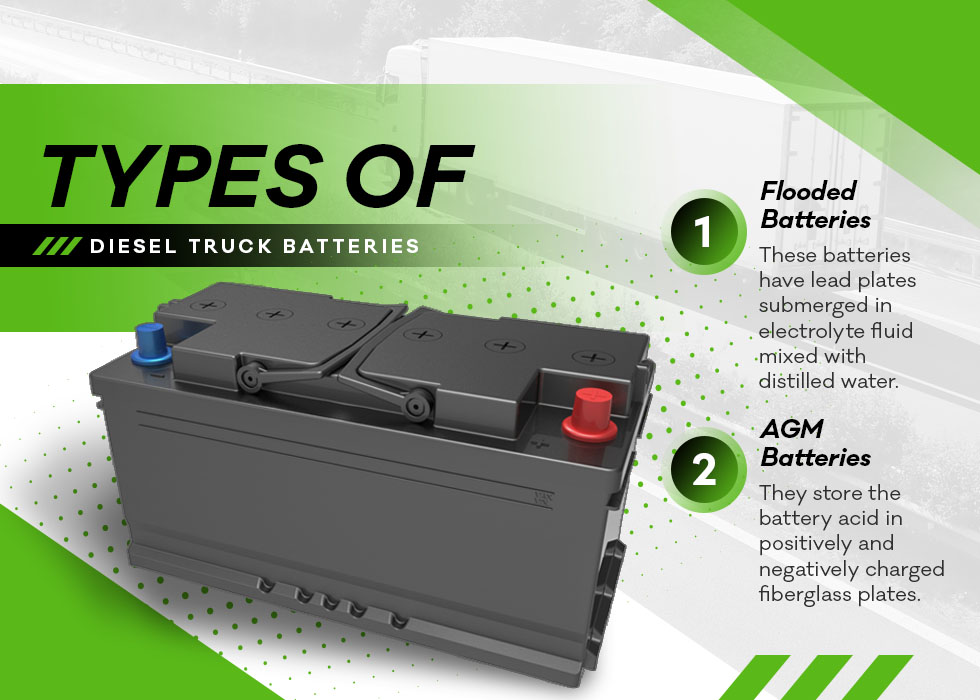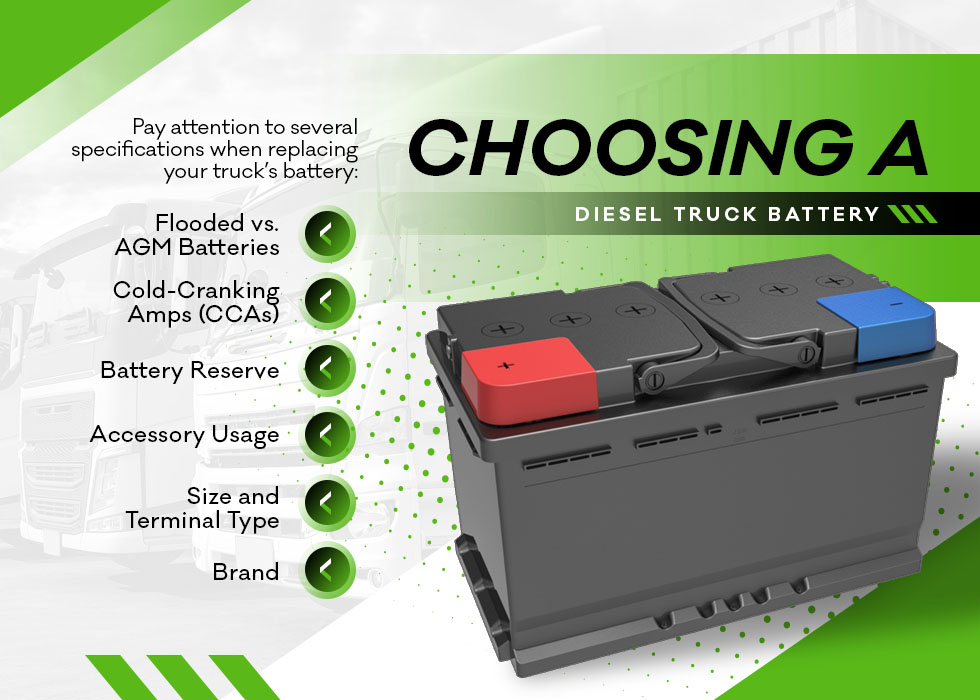Battery Power 101: Which Diesel Batteries Last the Longest?
Sep 23rd 2024

Your diesel truck battery should last an average of four years, but exposing it to cold weather, running excess electrical components and poor maintenance can ruin the power source in as little as three years, leading to costly replacements for your ride or fleet. Dozens of factors can affect the power life cycle. Voltage and electrical output often vary daily, but you can’t get to work or start towing with a dead battery. Learn which diesel batteries last the longest and when to replace them to minimize downtime and disruptions.
Diesel Truck Batteries 101
Powering an 18-wheeler or turbocharged pickup takes grit and durability. They run on highly compressed air and fuel. What is diesel?
Diesel truck batteries start the engine by heating the glow plugs, which warm the air-fuel mixture to the point of combustion. They use more power when starting than gasoline engines because they need to heat the air and fuel instead of sparking combustion.
The battery works hardest when starting. Once the air and fuel burn, the engine doesn’t have to work as hard to maintain a consistent temperature. The air-fuel mixture won’t burn properly without a working battery, leading to reduced power, fuel efficiency, rough idling, longer start times and engine misfires.

Diesel trucks are heavier and require more power than gasoline vehicles. Many commercial models run on one 12-volt battery, but heavy haulers usually have two 12-volt batteries in a parallel configuration with their negative and positive terminals connected, which increases cranking power. Dual batteries must be the same type and have the same voltage.
Starting the Engine
Testing the battery estimates the power output. When starting, the battery voltage drops as the unit cranks the engine, but it should recover once the vehicle runs. Older batteries gradually lose their ability to return to ~12.6 volts after a few minutes of cycling, which means it’s on its last leg. If the output stays below 12 volts while running the engine, it’s time to replace the battery.
The Alternator
The alternator maintains voltage while the engine is running by converting chemical energy from burning compressed air and fuel into electrical energy. It has a stator and rotor to create alternating current (AC), which gets converted into direct current (DC) that charges the battery. Without an alternator, the battery would quickly exert all its energy on starting the engine without replenishing, eventually bringing your ride to a halt.
You can drive without a functioning alternator, but only for approximately 30 minutes or less until you can reach the closest mechanic.
Types of Diesel Truck Batteries

Flooded Batteries
Traditional flooded truck batteries have lead plates submerged in electrolyte fluid mixed with distilled water, which acts as a conduit. When the alternator converts chemical energy into electricity, it separates it into hydrogen and oxygen. Any excess power escapes out of the vent, reducing the amount of water in the tank. You must periodically top off the battery with distilled water and check electrolyte levels to optimize output. Excess vibrations can leak acid out of the case, causing corrosion.
AGM Batteries
Absorbed glass mat (AGM) batteries are sealed and flood-proof. They store the battery acid in positively and negatively charged fiberglass plates to cushion against vibrations. These plates pass electricity through sponges in mesh plates instead of a free-flowing liquid, which reduces resistance.
AGM batteries pack more lead acid into the unit, creating more power with faster start times. AGM batteries use valves to regulate the amount of hydrogen and oxygen that can escape during recharging to prevent water loss, so you don’t have to keep topping it off.
Choosing a Diesel Truck Battery
Pay attention to several specifications when replacing your truck’s battery:
Flooded vs. AGM Batteries
AGM batteries provide more power, last up to three times longer and require less maintenance than flooded batteries. They reduce vibrations, perform better in hot and cold temperatures and can start an engine 60,000 times or more.
Due to their innovative engineering, AGM batteries cost more than flooded batteries but often provide a better return on investment. You can use either option to power a diesel truck, but don’t downgrade from an AGM battery to a flooded unit to maintain power and efficiency.
CCA
Diesel truck batteries are rated by the number of cold-cranking amps (CCAs), which measure the amperage output at 0 degrees Fahrenheit until the voltage drops. Check the amp requirements in the battery specifications in your owner’s manual to supply enough power to the engine. Dual-battery configurations typically require 800 CCAs or more. If you live in a cold climate or use one battery, aim for at least 1,000 CCAs. Replace your battery with one that has the same or a higher CCA rating to avoid losing power.

Battery Reserve
Unless your truck has an automatic shut-off feature, you might worry that leaving your lights or the radio on could result in a dead battery. You might also need a portable power supply to run electronics on the job. Check the battery’s reserve capacity (RC) to see how long it will run with minimal output. RC is measured in reserve minutes. So, an RC of 150 would supply power for 150 minutes.
Accessory Usage
Some batteries function primarily to start the engine without leaving much power for accessories. Choose a battery made for cycling duty with a higher output and longer amperage time when running multiple aftermarket electronics, such as a power lift, air conditioning, agricultural equipment, plow or light bar.
Size and Terminal Type
Research the dimensions of your OEM battery to select the correct size. The terminals need to match the configuration exactly. Leave at least four inches between the battery and hood to prevent knocking.
Brand
Buy a battery with an extended warranty from a reputable manufacturer. The best diesel truck brands include:
- ACDelco
- Odyssey
- Optima
- XS Power
Longest-Lasting Diesel Batteries
XS Power D3400 XS Series 12V AGM High Output Battery
A legendary AGM battery, the XS Power D3400 is preferred for semi-trucks. The seal is leak-proof to minimize wear and tear. It can power multiple electronic accessories simultaneously to make your ride more comfortable. It’s also designed to start in sub-zero temperatures for shorter start times in cold weather. It has a chrome exterior, SAE terminals and 65 amperage.
Optima Batteries 8020-164 35 RedTop and YellowTop
The latest Optima line has a unique spiral cell design that increases AGM efficiency. It has a heavy-duty plastic exterior, 44 amperage and SAE terminals. The RedTop design is ideal for most automotive applications, including heavy-duty equipment, passenger vehicles and diesels with minimal electronics. The YellowTop can operate under higher loads with a longer cycling duty to power more aftermarket electronics.
Odyssey EXTREME 34/78-PC1500DT Battery
The Odyssey EXTREME has a ventless design that makes it nearly impossible for the acid to escape. The plates are more compact and have a wider surface area than other AGM models, which allows them to fit more power into less space. It can withstand the bumps of off-roading and uneven terrain without losing a charge.
The unit is also stored in a flame-retardant case to protect it in an accident. Odyssey offers a competitive four-year warranty to give you lasting peace of mind. It has a brushed exterior and 48 amperage, and it has SAE terminals.
ACDelco 94RAGM Professional AGM Automotive BCI Group 94R Battery
The diesel ACDelco battery offers 800 CCAs and has proven itself in extreme weather. It has a ribbed casing to reduce spills from vibrations. The lead plates are coated with a high-density negative paste that limits movement and hastens charging. It produces 80 amperage, has a machined exterior and marine terminals and includes a 42-month warranty.
Shop All of Our Diesel Products
How to Extend Your Diesel Battery’s Lifespan

While these diesel batteries last the longest, the life cycle largely depends on the climate, storage conditions and how well you maintain the unit.
Test the voltage output before, during and after starting your engine using a digital multimeter and compare the results with the equipment manufacturer’s specifications. A healthy battery will dip when starting the engine, but anything below 10 volts should be a cause for concern. Measure how long it takes the battery to return to 12.6 volts after starting and whether it remains stable. Check the alternator output and look for readings between 13.8 and 14.8 volts. An alternator charging less than 12.5 volts could indicate faulty wiring, battery issues or a malfunctioning powertrain control module (PCM).
Monitor engine start-up times to see how quickly the battery can heat the glow plugs and ignite the air-fuel mixture. A delayed start can mean the battery is weakening. Dual batteries must operate at the same voltage to keep the engine running. If one battery loses power faster than the other, replace both simultaneously. However, they can still be used as single batteries.
Regularly clean the battery exterior and terminals with a brush to remove dirt, rust and debris. Check the connections and battery cables for damage. It’s best to store the battery in a dry, room-temperature location. Use a battery charger to reduce degradation or a battery warmer to insulate the unit from temperature shifts that affect performance.
What Happens When the Battery Loses Power?
It’s natural for batteries to lose power over time, but excess power loss can affect engine performance. Voltage variances can lead to overheating, causing the engine to burn more fuel than necessary. Monitor fuel mileage and check the voltage to see if it’s causing the issue.
Excess heat will damage the exhaust gas recirculation (EGR) cooler, causing cracks in the heat transfer mechanism. A faulty EGR cooler will leak coolant into the crankcase, increase toxic emissions and reduce fuel efficiency even faster. Replace the EGR cooler if the engine continues to run hot.
Diesel engines use a network of sensors to monitor various stats, including fuel and oil pressure, air temperature and power output. Poor voltage will cause a mismatch between the PCM and other systems throughout the engine, leading to performance issues and mechanical failures.
Battery performance directly affects the performance of the high-pressure oil pump (HPOP), which provides lubrication and supplies oil to the fuel injectors. A lack of oil increases friction and oxidation. Replace the HPOP if the oil pressure remains low after changing the battery.
A weak battery can also limit the amount of fuel being injected into the combustion chamber, reducing power and acceleration. Check for blockages in the fuel injection pump and replace rusted fuel lines caused by water separation in the fuel tank. Replace the injection pump to avoid running contaminated fuel through the engine. Your electrical components will also lose power and intensity or become less responsive as the battery ages. Test your headlights lumens, AC flow and lift accessories for functionality.
A bad battery can lead to a host of concerns beyond starting your engine. It powers the sensors and mechanical devices that move oil and fuel in and out of the injectors and may even mask underlying issues by interfering with the PCM. You may not notice a slight change in the voltage output, but these problems will only worsen until you replace the aging unit. Always swap out your battery or batteries before they degrade to avoid damaging other systems.
Image Credits
Castro Carvalho/Shutterstock.com
NATALIA61/Shutterstock.com
Vitpho/Shutterstock.com
Jaroslav Pachy sr/Shutterstock.com
Bascar/Shutterstock.com
Siwakorn1933/Shutterstock.com
Sergey Ryzhov/Shutterstock.com
Brandon Woyshnis/Shutterstock.com
